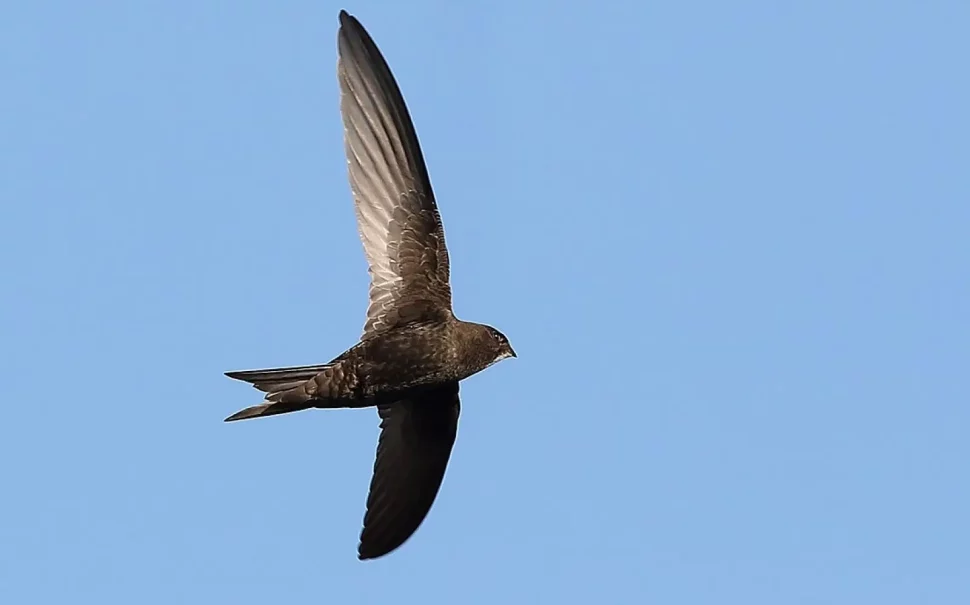The return of migratory birds to the UK heralds the arrival of summer, but each year they are flocking back in fewer numbers.
Swifts, swallows and house martins are some of the most well-known migratory birds as they travel in high numbers towards the end of spring.
But the latest Breeding Bird Survey, just published, shows their numbers, along with many other migratory birds are continuing to decline, with swifts and house martins on the UK Red List for birds of conservation concern.
The survey, published by the British Trust for Ornithology in partnership with the RSPB and the JNCC (Joint Nature Conservation Committee), is in its 30th year, and in this time the Swift population has fallen by 68% between 1995 and 2023 while House Martins have declined by 42%.
The familiar swallow, while not on the Red List, has fallen in number by a quarter over the same period.
The effect of weather and climate on seasonal changes in the natural world is one of the factors in this trend.
Bill Haines, Owner and Lead Ornithologist at West London Birding, said: “The phenology is changing and so insect patterns are shifting, and they are coming up earlier than usual.
“This along with ripping out hedgerows, and losing green spaces to urban development, has caused a lot of species to decline.”
The RSPB says a particular factor in the decreasing number of swifts, and to some extent, house martins, is a loss of nesting sites.
These birds have struggled due to urban expansion and regeneration, as swifts tend to nest in small crevices in buildings, while house martins typically nest under the eaves.
Therefore, when old buildings are knocked down or renovated many favourable spots for these species are being lost and new buildings often do not have the nooks and crannies needed for nesting.
This happened not just in large buildings but households too.
Haines explained: “In cities, especially 15-20 years ago and during the financial boom, people were renovating houses, replacing sockets where they nest or digging front gardens up to put an extra driveway in.”
RSPB local groups around the UK are raising awareness for the problem and working to provide solutions, particularly for the fast-declining swift.
The Lancaster group, for example, has teamed up with the local men’s shed project to create a ‘Swift City’, making nest boxes and installing them into streets to create a community fit for swifts to inhabit.
Meanwhile, in London, Bromley local group has been reviewing planning applications and requesting the installation of ‘Swift Bricks’ on new developments.
These are specially designed bricks that allow the birds to nest.
Haines said: “There are a number of lobbies to make swift bricks compulsory in new builds, but it can still be a challenge to encourage swifts to leave old nesting sites they have been for many years.”
While the number of swifts and house martins continues to decline, they still remain two of the more populous species of UK migratory birds.
The spotted flycatcher and turtle dove, however, are two red listed birds which are now scarce.
The spotted flycatcher population fell by 67% between 1995 and 2023 while turtle dove numbers dropped by 98% over this period, the steepest decline for any UK bird.
Some of the issues faced by migratory birds cannot be handled solely on a domestic level, with last month’s World Migratory Bird Day stressing that action is required across the length of the migratory routes.
Haines added: “There are very few safeguards for birds either flying by day or night, places for them to stop on passage where they are safe.
“There are conservation groups that can lobby across Europe, to say, we’re losing a lot of migratory birds is there any chance you can make changes in this place they stop in, because we know a lot of places where they stop from ringing information.”
Many species of migratory birds have already arrived in the UK while others continue to appear this month, and studies will be underway to reveal whether any patterns are shifting in their lengthy decline.
Featured image credit: Marton Berntsen via Wikimedia Commons under CC BY-SA 3.0 licence





